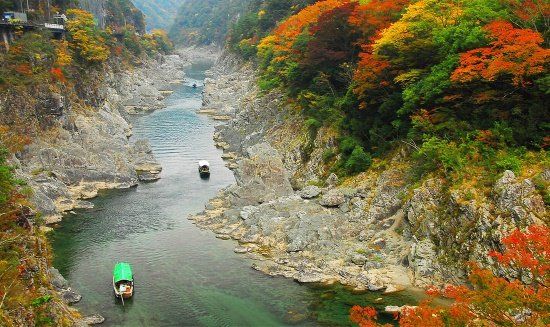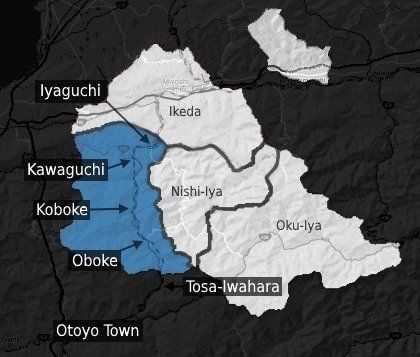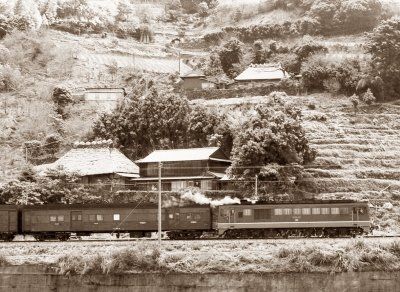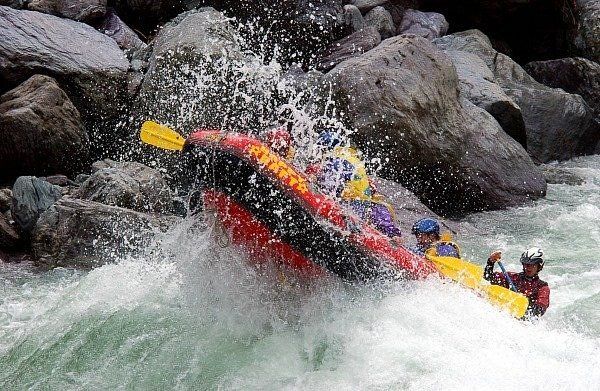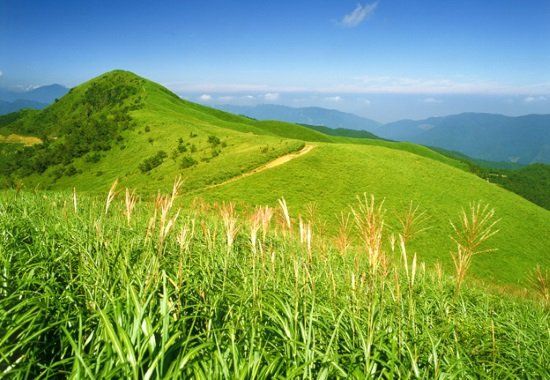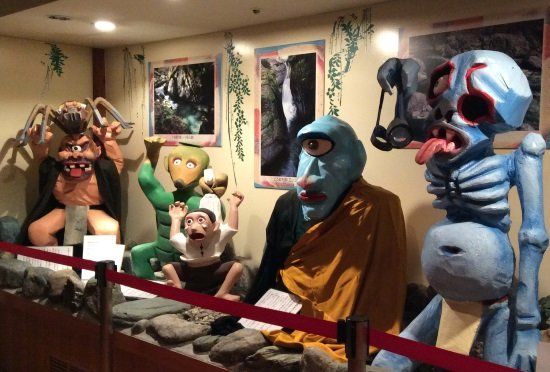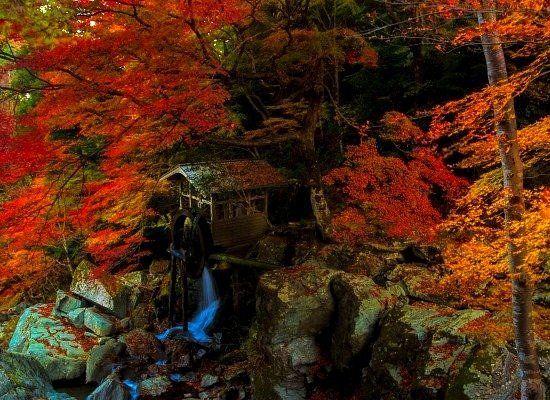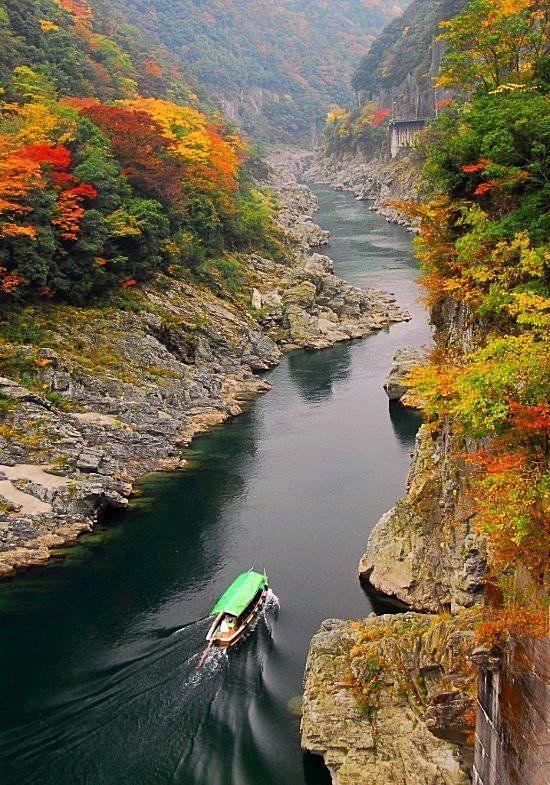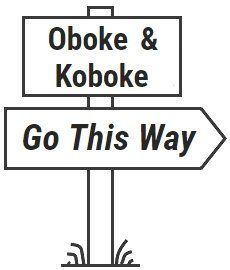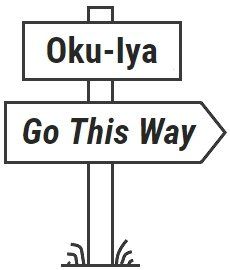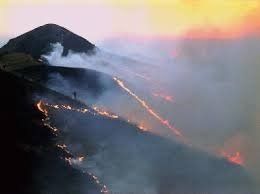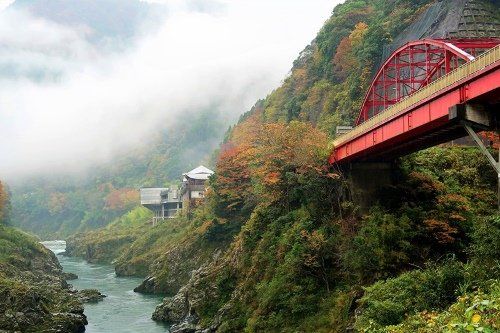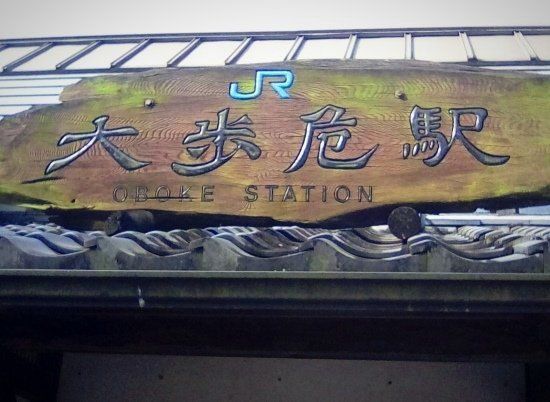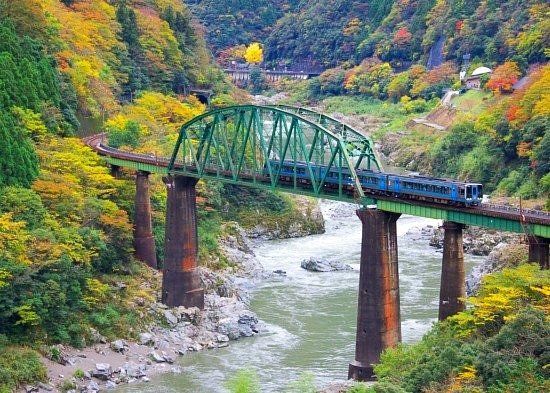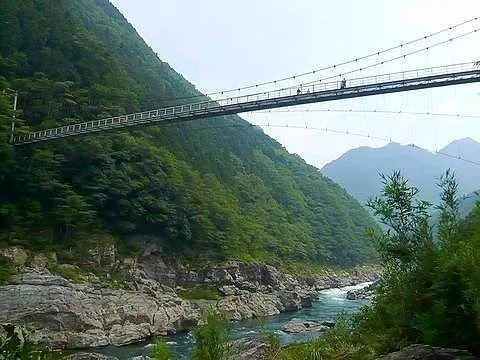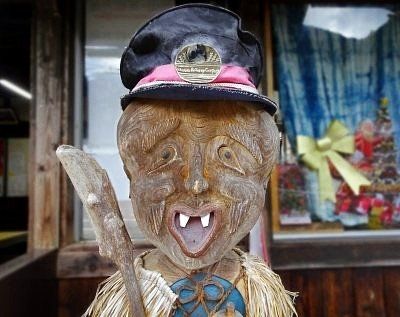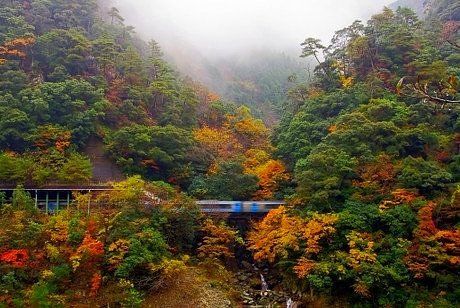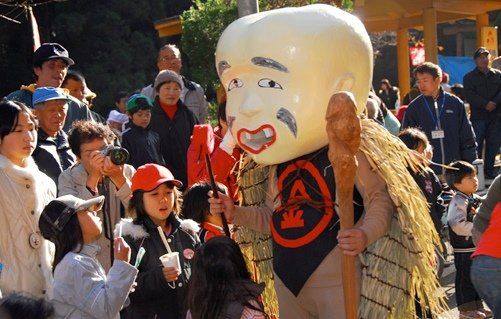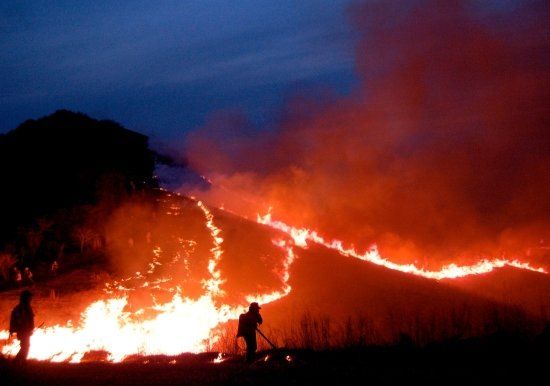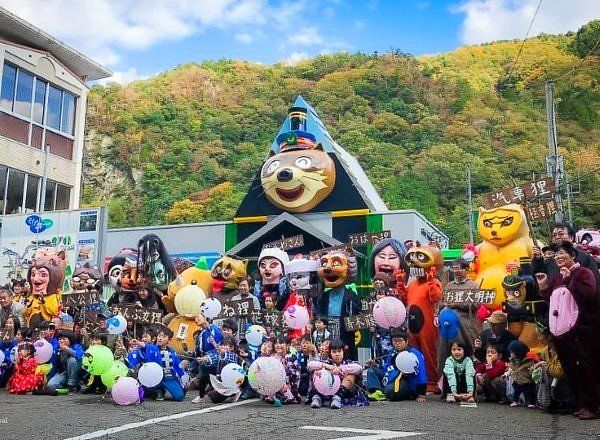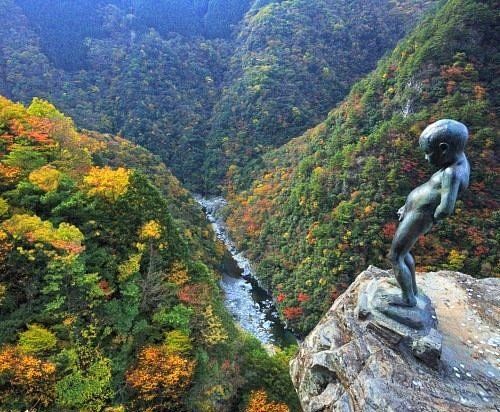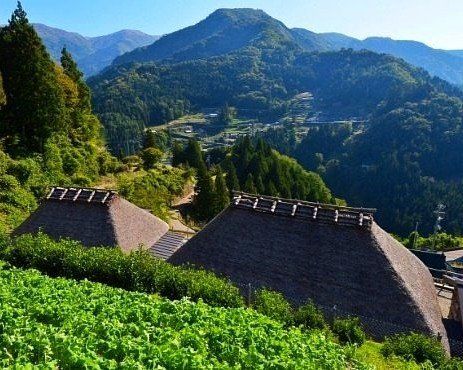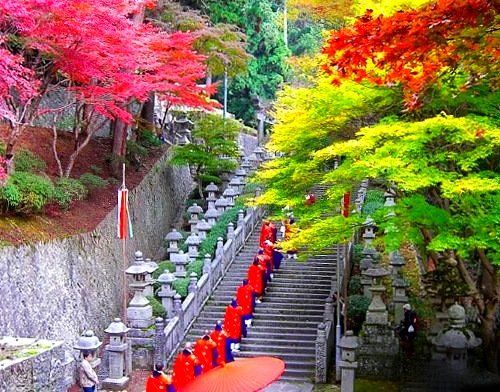The ancient gorges of Oboke and Koboke are believed to have formed over 100 million years ago. Even though the Yoshino River flows through here, linking the vast interior of Shikoku with the ocean on the eastern coast, due to the intense rapids of the gorges this has never been much of a navigable waterway. Along with the steep "dangerous walking" of the gorge area, the natural bottleneck formed here prevented the southern part of the area from being much of a transit point.
However, travelers did regularly pass through the northern section of the area via Kawaguchi, and there are several historic sites around here. The name "Yamashiro", for which the whole area is officially known, translates as "mountain castle" and indeed, in the northern part are the remains of the ancient Taojyo-Ato fortress. Like the Iya Valley, the people who settled in the area did so on the slopes of the mountains, being that there was a complete lack of flat space. Accordingly, the food culture revolved around what could be grown in such conditions.
Also like the Iya Valley, much of the area was cut off from the rest of the country until roads were finally built in the early 20th century. The train line was opened during the 1930s, and with this not only was the south of Shikoku linked with the north, but this brought forth a wave of traders and travelers from across Japan, opening the beauty of the region to the outside world.

